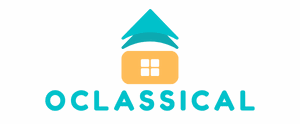In a world where pajamas have become the unofficial uniform of the workplace, setting clear expectations for remote work is more crucial than ever. It’s like trying to herd cats—without a plan, chaos reigns. But fear not! With the right strategies, managers can transform their teams into productivity powerhouses, even from the comfort of their couches.
Imagine a remote work environment where everyone knows what’s expected of them, deadlines are met, and coffee breaks don’t turn into Netflix binges. Establishing clear guidelines not only boosts accountability but also fosters a sense of community among team members. So let’s dive into the art of crafting those expectations and ensure that remote work feels less like a game of hide-and-seek and more like a well-orchestrated symphony.
Table of Contents
ToggleUnderstanding Remote Work
Remote work presents unique challenges and opportunities for organizations. Employees experience flexibility in their schedules while also needing to manage time effectively. Productivity can improve, but clear guidelines play a crucial role in achieving success.
Communication tools remain essential for collaboration, fostering connections among team members. Daily check-ins or weekly updates can help maintain engagement and accountability. Setting specific work hours ensures employees understand availability and reduces confusion. Additionally, organizations should emphasize the importance of structured feedback to keep teams aligned.
Technology serves as the backbone of remote work, enabling employees to collaborate seamlessly. Cloud-based platforms facilitate document sharing and project management. Ensuring team members understand how to utilize these tools enhances workflow efficiency. Training sessions on best practices may yield significant benefits.
Balancing performance and well-being stands as a priority for managers. Encouraging breaks and promoting a healthy work-life balance increases job satisfaction and reduces burnout. Regularly reviewing outcomes ensures that expectations match organizational goals, allowing teams to adapt when necessary.
Monitoring performance through metrics and outputs is essential. Metrics can include project completion rates, quality of work, and communication effectiveness. Sharing these metrics with employees reinforces accountability and sets clear standards. Consistent evaluations help identify areas for improvement and celebrate achievements, motivating teams to reach their potential.
By establishing a strong foundation centered on clear communication, effective technology use, and performance monitoring, managers can empower their teams in the remote work environment.
Importance Of Setting Expectations

Setting clear expectations for remote work creates a structured environment that benefits both employees and employers. It fosters accountability and enhances overall productivity.
Benefits For Employees
Employees experience clarity in their roles when clear expectations are established. They gain a better understanding of deadlines and responsibilities, which reduces confusion. Structured guidelines lead to increased job satisfaction as individuals know what is required of them. Improved communication throughout the team creates a supportive atmosphere that encourages collaboration. Flexibility in work hours allows employees to manage their time more effectively, promoting a healthy work-life balance. Consequently, employees report lower stress levels and improved morale.
Benefits For Employers
Employers see increased productivity levels when expectations are well defined. Clear guidelines help teams stay on track and meet project deadlines consistently. Reduced ambiguity leads to fewer mistakes and less time spent correcting work. Managers find it easier to evaluate performance metrics aligned with established goals, enhancing accountability within teams. Improved communication tools enable quick resolutions of issues, reducing delays. Employers ultimately create a more engaged workforce that contributes to the organization’s success.
Key Areas To Address
Setting clear expectations in key areas enhances remote work effectiveness. Focus on communication, performance, and work-life balance to support teams.
Communication Guidelines
Establish regular check-ins to clarify tasks. Schedule daily or weekly meetings to maintain connection. Utilize communication tools like Slack or Microsoft Teams for instant messaging. Clearly define channels for updates, feedback, and project discussions. Hold team members accountable for responses to foster engagement. Provide written guidelines outlining communication protocols for consistency. Ensure everyone understands when and how to reach out for support.
Performance Metrics
Define clear performance metrics to evaluate productivity. Utilize tools like Asana or Trello for project tracking. Set specific, measurable goals for each team member to reinforce accountability. Regularly review progress during one-on-one meetings to provide constructive feedback. Use data to identify areas for improvement and recognize achievements. Offer opportunities for personal and professional development based on performance reviews. Keep expectations transparent to motivate team members toward success.
Work-Life Balance
Promote a healthy work-life balance for employee well-being. Encourage breaks throughout the day to reduce burnout. Allow flexible working hours to accommodate personal commitments. Provide resources for mental health and stress management support. Set clear boundaries about availability to prevent work from encroaching on personal time. Recognize individual schedules and unique circumstances within the team. Foster a culture where taking time off is normalized and encouraged.
Strategies For Effective Communication
Effective communication plays a crucial role in setting expectations for remote work. Managers must implement strategies that foster clarity and connection among teams.
Regular Check-Ins
Regular check-ins enhance team cohesion and maintain engagement. Schedule daily or weekly meetings to discuss progress and address challenges. Utilize video conferencing tools for face-to-face interaction, fostering a sense of community. Adjust the frequency based on team needs, but consistency remains key. These check-ins encourage open dialogue, allowing employees to voice concerns in real-time. Managers benefit from immediate feedback, creating an atmosphere of trust and accountability.
Clear Documentation
Clear documentation establishes a solid foundation for remote work. Outline roles and responsibilities in easily accessible formats. Use shared documents to detail project guidelines, deadlines, and performance metrics. This documentation serves as a reference point for employees, ensuring everyone remains aligned. Incorporate visual aids like charts or bullet points for easier understanding. Encourage updates to these documents to reflect any changes in expectations. Regularly revisiting documentation reduces confusion and reinforces clarity across teams.
Tools To Facilitate Remote Work
Utilizing the right tools can significantly enhance remote work efficiency. These tools streamline processes, improve communication, and foster collaboration among team members.
Project Management Software
Project management software like Asana, Trello, or Monday.com effectively organizes tasks and tracks progress. These platforms allow teams to assign tasks, set deadlines, and monitor project timelines. Visual boards and lists help employees prioritize work while maintaining accountability. Regular updates ensure everyone stays informed on project status, which minimizes confusion. Utilizing such software significantly reduces the chaos associated with remote work, leading to improved productivity.
Communication Platforms
Communication platforms such as Slack and Microsoft Teams facilitate easy collaboration. Instant messaging and video call features enable quick discussions and immediate feedback, enhancing team engagement. These tools allow employees to share files and updates seamlessly, reducing email overload. Establishing dedicated channels for different projects or topics ensures organized communication. Using these platforms fosters a collaborative culture, which is vital for maintaining connections in a remote environment.
Setting clear expectations for remote work is essential for fostering a productive and engaged workforce. By implementing structured guidelines and utilizing effective communication tools, managers can create an environment that promotes accountability and collaboration.
Encouraging flexibility while maintaining performance standards ensures employees feel supported and valued. When teams understand their roles and responsibilities, they can navigate challenges more effectively and achieve their goals.
Prioritizing well-being alongside productivity not only enhances job satisfaction but also contributes to a healthier work culture. With the right strategies in place, remote work can become a streamlined and successful experience for everyone involved.



